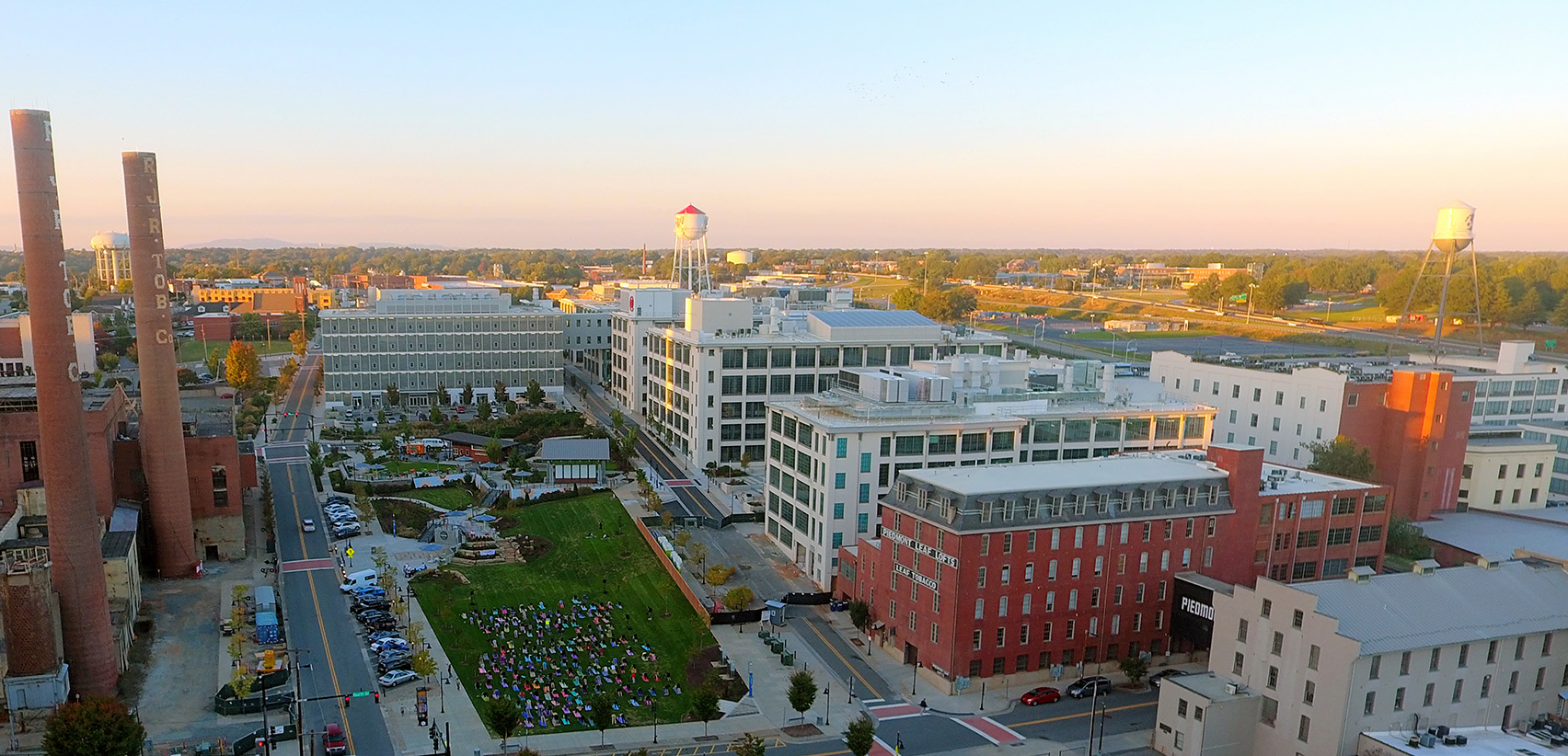Winston-Salem, N.C. innovation district recognized as a “Best Practice for Creating Integrated Places” for intentionality around developed mixed-use space
Innovation Quarter today announced special recognition by the Global Institute on Innovation Districts (GIID) as a “Best Practice for Creating Integrated Places.” The recognition comes as GIID has spent the better part of 2020 examining nine innovation districts around the world in an effort to better understand this emerging model as an avenue for driving new waves of innovative, sustainable, and inclusive growth.

“Innovation Quarter has shown the world that integrated places is not just a concept for one landmark building; it is the ambition to create mixed places for the majority of institution-led projects. In doing so, they have advanced the practice by leaps and bounds,” said Julie Wagner, president of the Global Institute on Innovation Districts. “The work of Innovation Quarter to create authentic, integrated places shows research universities and medical institutions around the world what it means to ‘lean in’ and create spaces where a diversity of people are welcome and can actively use.”
GIID estimates that over 100 innovation districts are emerging around the world, each distinctively leveraging their R&D strengths, place assets and the ambitions of local leadership and other partners. Yet, innovation districts—geographies commonly defined by expansive single-use research institutions and campuses—often struggle to create innovation communities that facilitate the mixing of people, firms, and activities.
For Innovation Quarter, the vision for transforming a former tobacco manufacturing district into a thriving innovation community was realized over decades of following best practices and other highly deliberate efforts—land assembly, the development of underlying infrastructure and the re-imagination of space.
Critical elements in the development of Innovation Quarter have included a focus on a mixed-use, amenity-rich urban development, importantly anchored by Wake Forest School of Medicine. In addition to work space, education space and multiple retail offerings, the Innovation Quarter features the 1.6-acre, publicly accessible Bailey Park and the Long Branch Trail, a 1.2-mile greenway that connects with the greater Winston-Salem greenway system. Interviews with leaders advancing Innovation Quarter helped GIID determine that successes in advancing mixed-use development relied on a combination of institutional engagement, private-sector participation, patience, evolutionary vision, and partnering with a thoughtful developer.
Bailey Power Plant is a strong example of how Innovation Quarter successfully creates integrated places. Rather than finding a single company to lease the entire 111,479 square foot building, the development team instead transformed the power plant—along with Bailey Park—into the district’s center of gravity.
This vision drove Innovation Quarter’s leadership and Wexford Science + Technology, their master developer, to achieve a new level of integrated design. Bailey Power Plant is now home to multiple restaurants, community spaces, an innovation hall, Wake Forest School of Medicine departments, private companies, and flexible spaces to house start-ups, non-profits, and community organizations.
“From the beginning, our desire for the Innovation Quarter has been to create dynamic spaces that help drive inclusion, convergence and collaboration,” said Innovation Quarter head of real estate development Graydon Pleasants. “We’re grateful to be recognized by the Global Institute on Innovation Districts in a way that allows us to be a model for mixed-use development to our counterparts around the world.”



